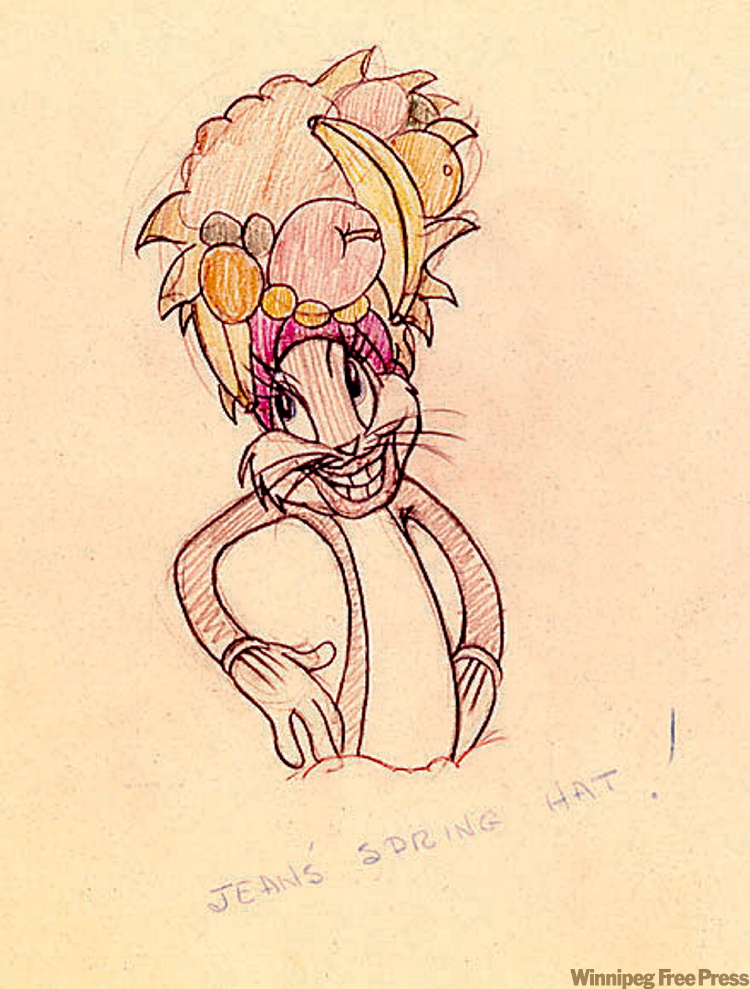Cartoon exhibit is the puddy tat’s pyjamas
Advertisement
Read this article for free:
or
Already have an account? Log in here »
To continue reading, please subscribe:
Monthly Digital Subscription
$0 for the first 4 weeks*
- Enjoy unlimited reading on winnipegfreepress.com
- Read the E-Edition, our digital replica newspaper
- Access News Break, our award-winning app
- Play interactive puzzles
*No charge for 4 weeks then price increases to the regular rate of $19.00 plus GST every four weeks. Offer available to new and qualified returning subscribers only. Cancel any time.
Monthly Digital Subscription
$4.75/week*
- Enjoy unlimited reading on winnipegfreepress.com
- Read the E-Edition, our digital replica newspaper
- Access News Break, our award-winning app
- Play interactive puzzles
*Billed as $19 plus GST every four weeks. Cancel any time.
To continue reading, please subscribe:
Add Free Press access to your Brandon Sun subscription for only an additional
$1 for the first 4 weeks*
*Your next subscription payment will increase by $1.00 and you will be charged $16.99 plus GST for four weeks. After four weeks, your payment will increase to $23.99 plus GST every four weeks.
Read unlimited articles for free today:
or
Already have an account? Log in here »
Hey there, time traveller!
This article was published 11/03/2010 (5715 days ago), so information in it may no longer be current.
When I was a kid, CBC used to broadcast The Bugs Bunny/Road Runner Hour every Saturday night. This was pre-DVD, pre-cable, pre-everything, basically, so 60 minutes of evening cartoons was just heaven.
Sure, there’s nostalgia to spare at The Art of Warner Bros. Cartoons, the new crowd-pulling show at the Winnipeg Art Gallery. This extensive travelling exhibition celebrates those timeless Looney Tunes and Merrie Melodies shorts, with their vivacious style and wise-cracking humour. Original works by studio artists — sketches, paintings and animation cels, along with some actual ‘toons — call up a gallery of colourful characters, like the irascible Yosemite Sam, the deluded Foghorn Leghorn, the gleeful Witch Hazel and, of course, the unsinkable Bugs Bunny.
There’s entertainment, but there’s also information. The show places this rich material in a historical context, tracing the development of the distinctive WB attitude from 1933 to the 1960s, when the animation unit shut up shop. (This includes some of the studio’s wartime propaganda efforts: Sketches from The Ducktators, 1942, demonstrate how Mussolini, Hitler and Tojo were turned into preening tyrants of the poultry yard.) Another section walks the viewer through the construction of a cartoon short, from character conception through storyboarding all the way to a completed cel.

Warner Bros. liked to bring pop culture references into its cartoons, with nods to movies, television and Hollywood stars. (The show features cartoon caricatures of Clark Gable and the sad-eyed Peter Lorre.) Eventually, the ‘toons themselves became an enduring and influential part of our culture.
The breakneck comic timing, the irreverent tone, the anvil-dropping possibilities of physical comedy have found their way into modern movies. The self-referential cartoon Duck Amock, in which Daffy Duck is tormented by his unseen animator in a surreal landscape, could even be called postmodern.
Without being condescending or arch, the gang at Warner Bros. created a sophisticated, silly, anarchic universe that both adults and kids could enjoy. Their best gags work on several levels. Take Bugs’ noted penchant for cross-dressing: the exhibition includes sketches of Bugs camping it up in a geisha outfit and wearing a hat of Carmen Miranda fruit. In one gender-bending cartoon sequence, Bugs dresses up as “a senorita” and ties the befuddled Elmer Fudd’s shotgun into knots.
Most of the WB animators and directors came from art school, and guys like Chuck Jones, Friz Freleng and Robert McKimson were masters at catching gesture and expression in concise, vivid lines. The model sheets, which set the specifications of a character and indicate ranges of motion and expression, are especially revealing. Wile E. Coyote’s sheet shows him fuming, scheming and at that unmistakable existential moment when he realizes that he’s suspended in thin air, again.
Other pieces highlight the work of the background artists. Concept paintings from the faux-Wagnerian What’s Opera, Doc? feature looming expressionist angles and moody colours.
In the show’s second-last room, a loop of classic shorts is projected onto a big wall. As impressive as the stills are, the Warner Bros. experience isn’t complete until you get Mel Blanc’s endlessly versatile vocal work, or the crackerjack musical scores of Carl Stalling, who gave so many North American kids their first taste of Beethoven, Tchaikovsky and Rossini. (You can get the whole “Welcome to my shop / Let me cut your mop!” overture: Rabbit of Seville is in the WAG’s rotation.)
The Art of Warner Bros. Cartoons is obviously the WAG’s spring revenue generator, and as revenue generators go, it’s a good one. I’d gladly pay the surcharge admission just for the chance to watch One Froggy Evening on the big screen, this time sharing it with my kids.
alison.gillmor@freepress.mb.ca

Art Review
The Art of Warner Bros. Cartoons
Winnipeg Art Gallery, 300 Memorial Blvd.
Until May 30

Studying at the University of Winnipeg and later Toronto’s York University, Alison Gillmor planned to become an art historian. She ended up catching the journalism bug when she started as visual arts reviewer at the Winnipeg Free Press in 1992.
Our newsroom depends on a growing audience of readers to power our journalism. If you are not a paid reader, please consider becoming a subscriber.
Our newsroom depends on its audience of readers to power our journalism. Thank you for your support.

